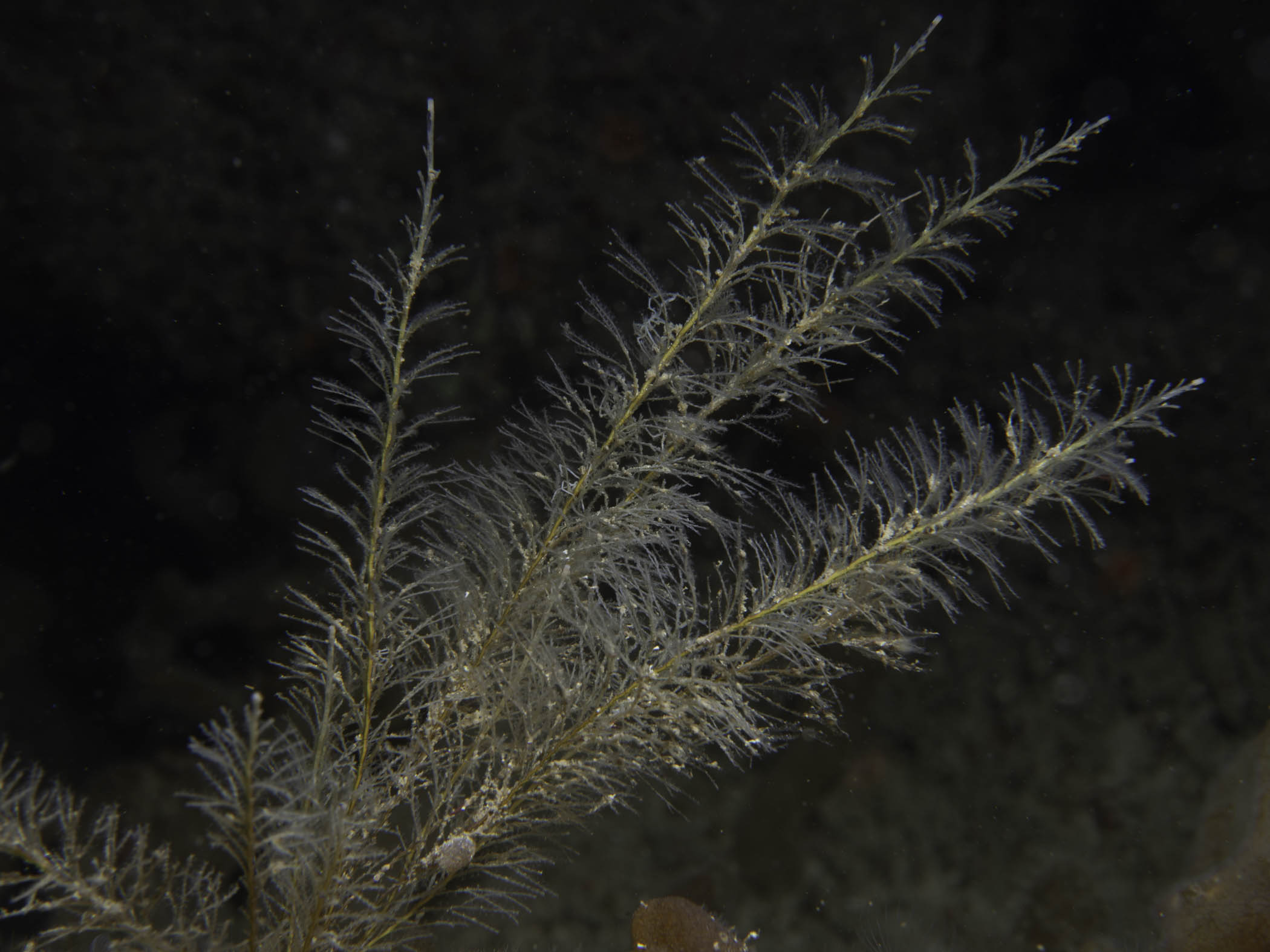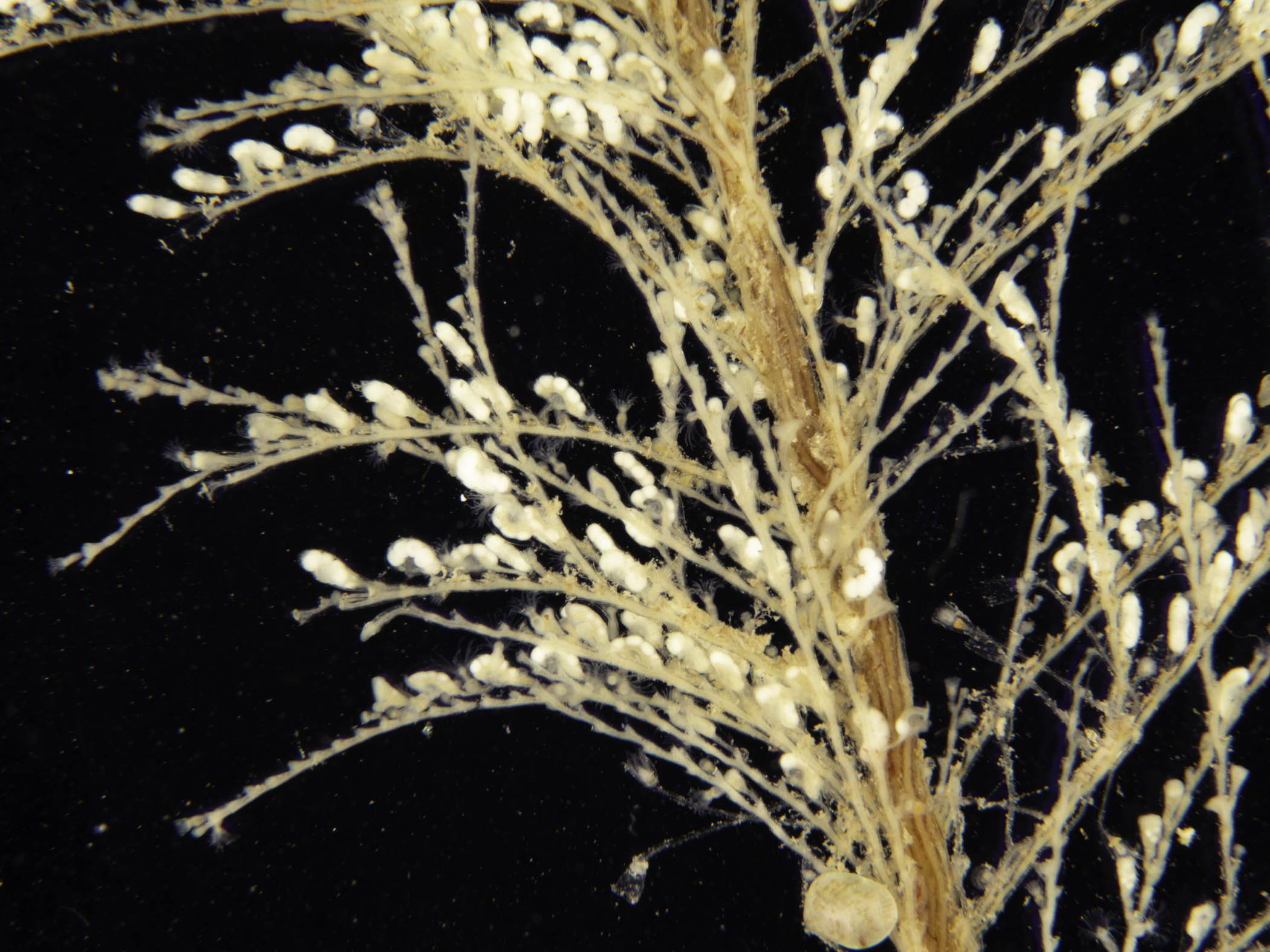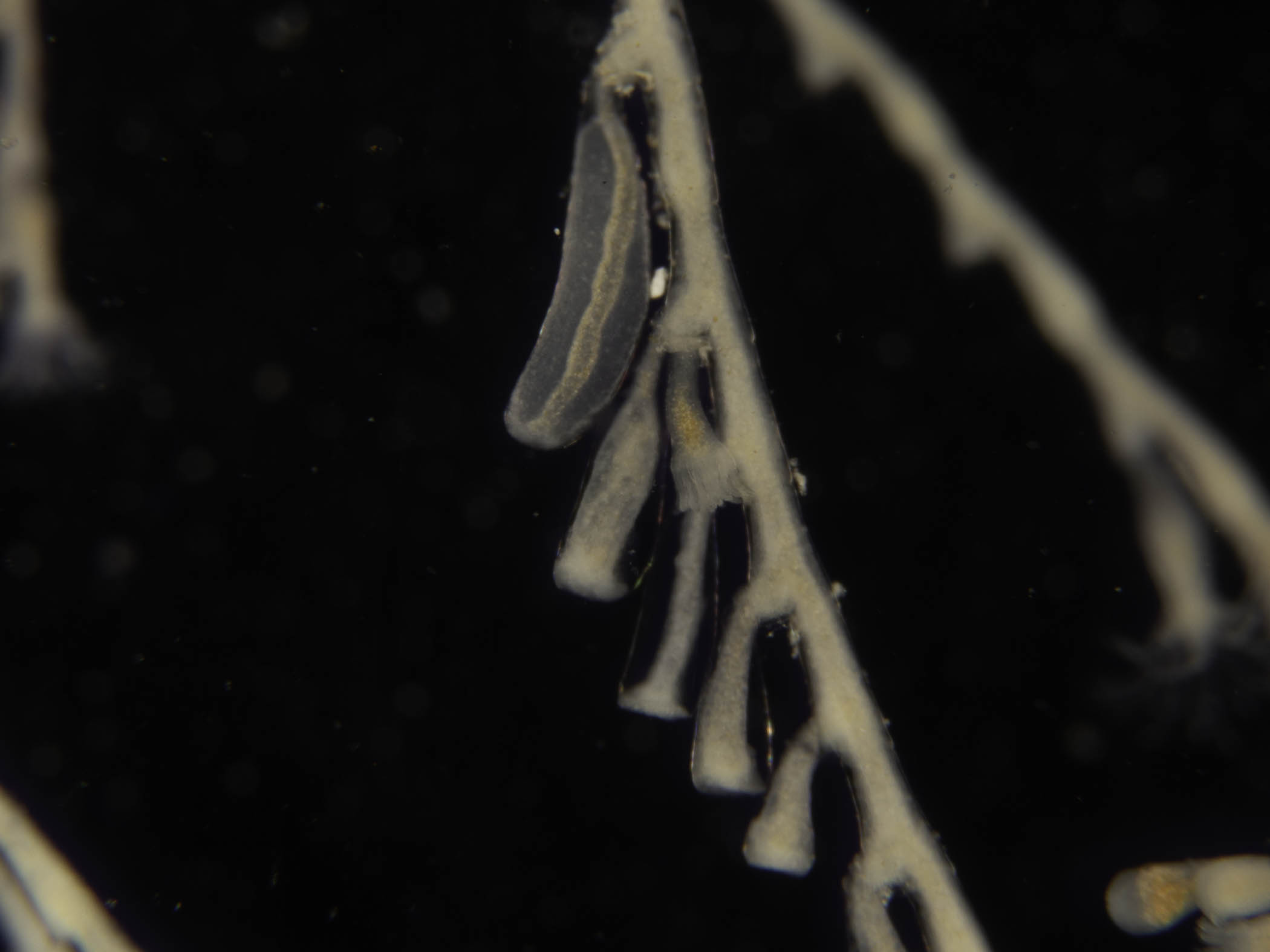| CNIDARIA : Leptothecata : Haleciidae | SEA ANEMONES AND HYDROIDS |
Halecium plumosum Hincks, 1868
 |
| Halecium plumosum |
Description: The colony consists of straggly main stems with short side branches of determinate length. The hydrotheca is tubular in shape and has an everted rim. Often there are several upright stems clustered together, indicating either rhizoid growths or aggregated settlement.
Habitat: This hydroid is usually found in the circalittoral zone, in areas of moderate tidal streams, attached to bedrock, boulders, shells and wrecks.
Distribution: There are recent observations from the east coast of Rathlin Island, Co Antrim and from the western coasts of Scotland.
Similar Species: The status of Halecium sessile is considered uncertain, recent authors consider it to be a juvenile form of this species.
Key Identification Features:
- Hydrothecae tubular with a slightly turned-out rim.
- Straggly colony similar in size to Sertularia argentea.
Distribution Map from NBN: Halecium plumosum at National Biodiversity Network mapping facility, data for UK.
iNaturalist: Halecium plumosum at iNaturalist World Species Observations database.
GBIF data for Halecium plumosum
WoRMS: Halecium plumosum at World Register of Marine Species. Accepted name: Halecium plumosum Hincks, 1868. AphiaID: 182727.
Classification: Biota; Animalia; Cnidaria; Medusozoa; Hydrozoa; Hydroidolina; Leptothecata; Haleciidae; Halecium
| Previous species | Next species |
| Picton, B.E. & Morrow, C.C. (2024). Halecium plumosum. Hincks, 1868. [In] Encyclopedia of Marine Life of Britain and Ireland. https://www2.habitas.org.uk/marbiop-ni/speciesaccounts.php?item=D5300. Accessed on 2025-04-04 |

